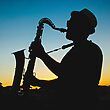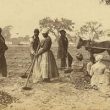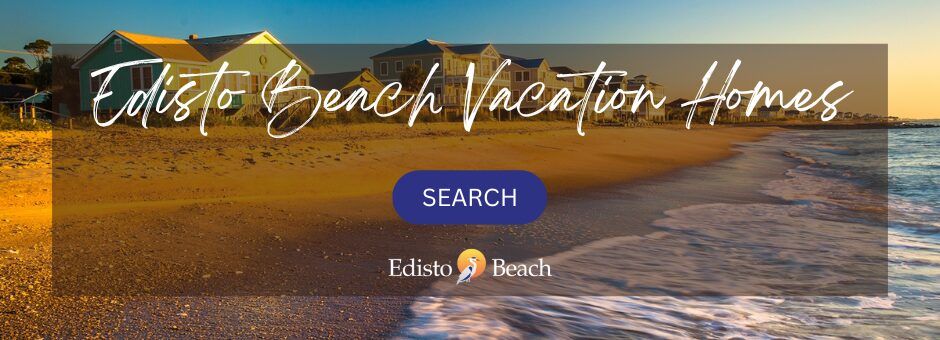Botany Bay Plantation Wildlife Management Area is 4,600 acres of beautiful land located in the northeast corner of Edisto Island and adjacent to the Atlantic Ocean.
As soon as you see the breathtaking beachfront, you will know you have taken a step back into history. The original residents of this area date back to the 1700s. They were plantation owners and enslaved West Africans known today as the Gullah-Geechee.
Exploring this area is an adventure as you come across historical buildings, freshwater ponds, wildlife, and the beautiful ocean. So, let’s take a step back in time and discover the history of this picturesque vacation destination!
History of Botany Bay
This area was originally two separate plantations named Bleak Hall and Sea Cloud. The Sea Cloud Plantation was established in 1695 by Christopher Hinkley, who received 170 acres on Edisto Island as a grant. The property was acquired by Paul Hamilton Sr. in 1727 and handed down to his son of the same name in 1748.
In 1825, the plantation was named “Sea Cloud Plantation” after Ephraim Mikell Seabrook married a woman with the last name McLeod and uniquely combined the names. However, the story about the name remains folklore today.
The Bleak Hall Plantation was established in the late 1790s by Daniel Townsend III. By 1799 his first son was born on the plantation, and by 1805, the mansion was built on the property. Townsend’s first son John inherited the property in 1842. During the 1840s, John Townsend acquired the Sea Cloud Plantation and was well known as a political leader and agriculturist in South Carolina during the 19th century.
He became the sates largest producer of prize-winning Sea Island cotton. The cotton was in high demand by European lace and dressmakers.
During the Civil War, the plantations faced occupation by the Confederate and Union forces. The Bleak Hall plantation house was used as a lookout.
Unfortunately, the home burned down afterward but was rebuilt after the war.
Both plantations made it through the occupation and remained active and thriving cotton crops through 1917. Sadly, the cotton crops on both plantations were destroyed by the pesky boll weevil that destroyed everything.
Cotton production immediately came to an end on the plantations, and the land was used to produce timber instead. The plantations continued to thrive until the early 1930s when Dr. James Greenway purchased both plantations and combined them creating the extraordinary Botany Bay you know today.
During the 1960s, a South Carolina outdoorsman purchased Botany Bay and bequeathed the land to the state as long as his wife was allowed to live there the remainder of her life. The stipulation was honorably met when his wife Margaret passed away in 2007.
As of 2008, the land became the Botany Bay Plantation Heritage Preserve and Wildlife Management Area managed by the South Carolina Department of Natural Resources.
Now that you know the captivating history of Botany Bay, it’s time to have some fun!
Explore Botany Bay Wildlife
As you enter the property, you are greeted by large oak, palm, and pine trees. Most of them are dripping with Spanish moss. The look makes you feel like you are traveling back in time and allows you to leave all your stress behind. You will come across wildlife such as raccoons, deer, birds, alligators, shorebirds, and more along the way.
As you explore the site, you will come across forest trails, buildings from the 1840s, a plantation house, and more.
Discover the Botany Bay Beach
It’s not called Botany Bay for anything! This unique beach features sun-bleached fallen and standing trees that create a boneyard. The shore is filled with unique seashells that you can search for and take pictures of, but beach rules say you can’t take them home with you.
While you discover beautiful things at the beach, make sure you take a nice walk on the shore during low tide. Once you enjoy your time at the beach, it’s time to explore the grounds of Bleak Hall Plantation.
Explore the Botany Bay Plantations
There are two buildings remaining at the Bleak Hall Plantation used for various purposes, such as general storage, an ice house, and a carriage house at some point during history.
The smaller of the two buildings is made from oyster shells which are also referred to as tabby.
Keep your eyes open when you see the agricultural fields because that’s where you can view plenty of wildlife and capture great pictures.
The Sea Cloud Plantation has agricultural fields that are maintained to house wildlife. If you look past the fields, you will see the old ruins of the plantation house. The brick foundation is left, but it was once a three-story house that featured an elegant ballroom that took up the entire top floor.
As you drive along, you will reach Jason’s Lake and see the ruins of a beehive well from 1825.
As you exit the property, the ancient trees create a unique canopy over the road and make you feel like you need to come back and visit very soon!
Rules and Guidelines
- No horses, dogs, metal detectors, drones, or alcohol allowed on the beach or the causeway to the beach.
- Clean up after yourself and make sure you don’t leave anything behind.
- Do not remove any seashells or items from the beach or grounds.
- You need to get a day pass from the kiosk located at the entry of the park.
Location and Hours
Botany Bay Plantation and Heritage Preserve and Wildlife Management Area is located at 1066 Botany Bay Road, Edisto Island, SC 29438
Follow the signage along Botany Bay Road as it leads you to the park. The causeway to the beach is wheelchair accessible.
Contact number: (843) 869-2713
Hours: It’s open from one-half hour before and after the sun rises and sets. It’s open to the public on Mondays, Wednesdays, Thursdays, Fridays, Saturdays, and Sundays. Tuesdays are designated for scheduled hunts.
Visit Botany Bay Today!






